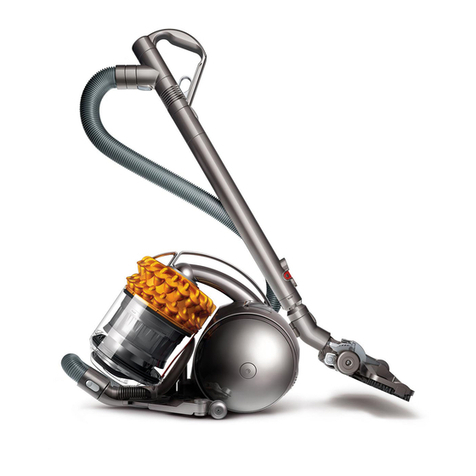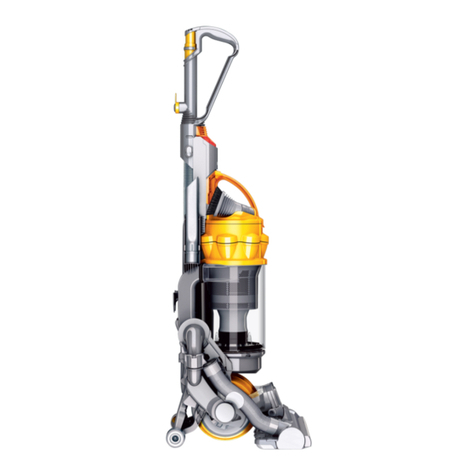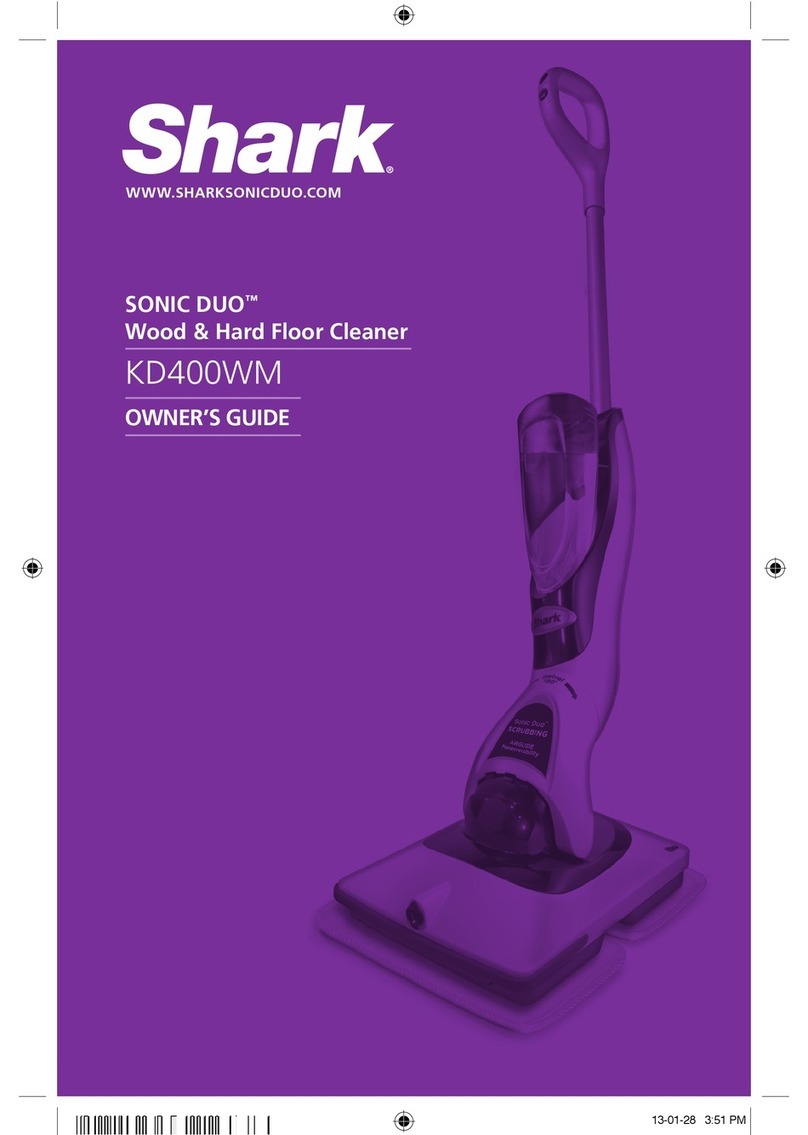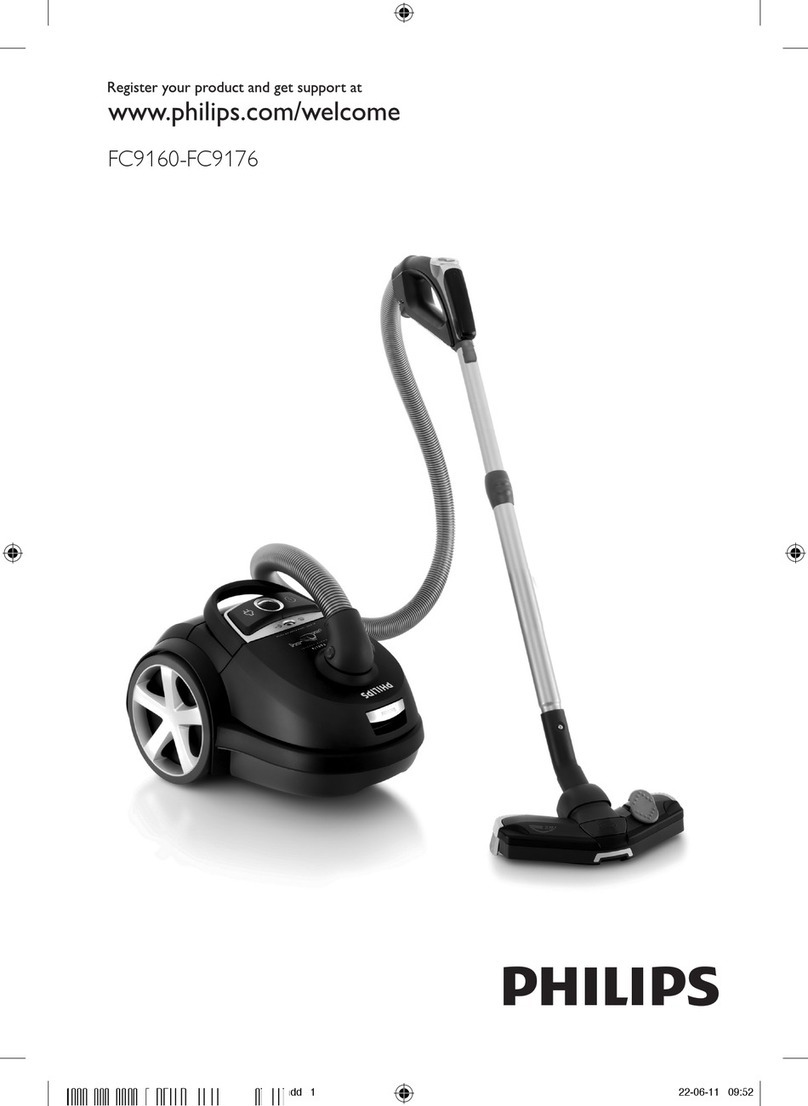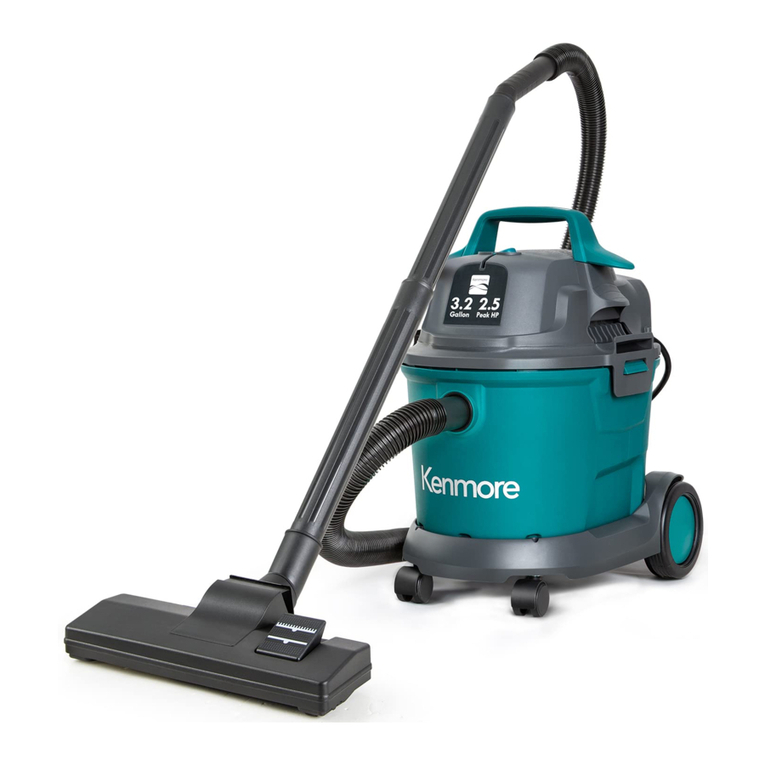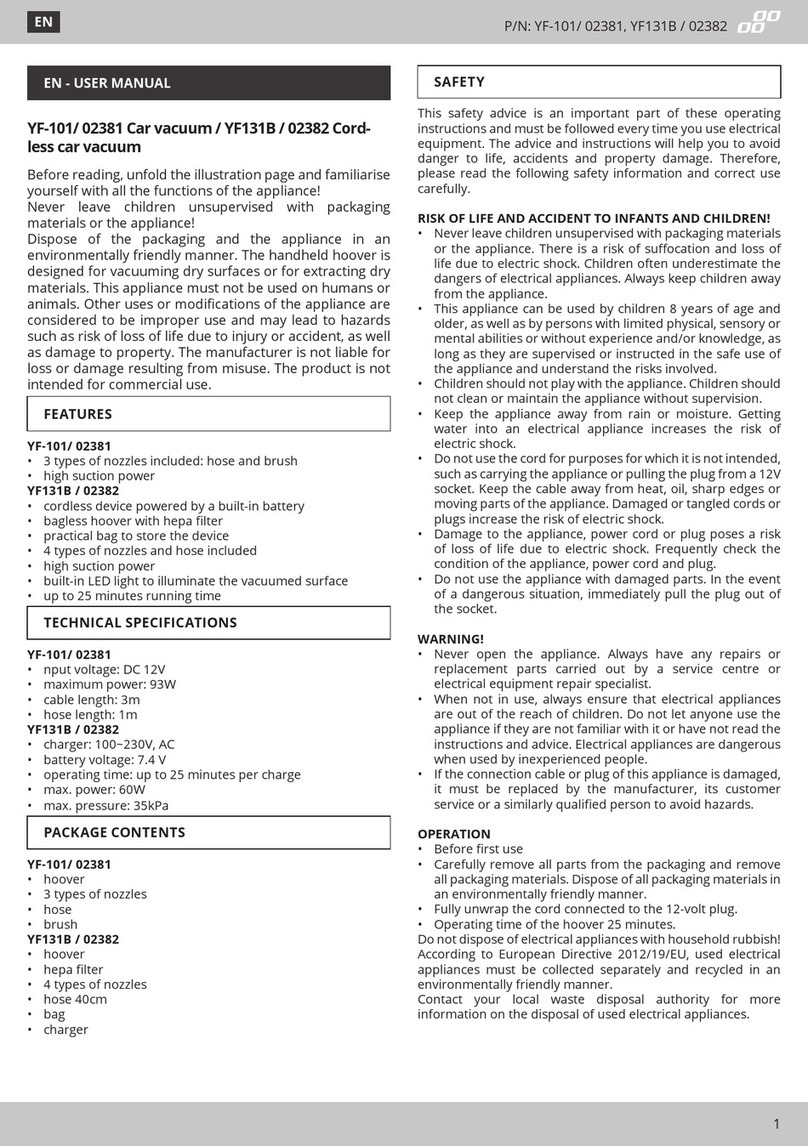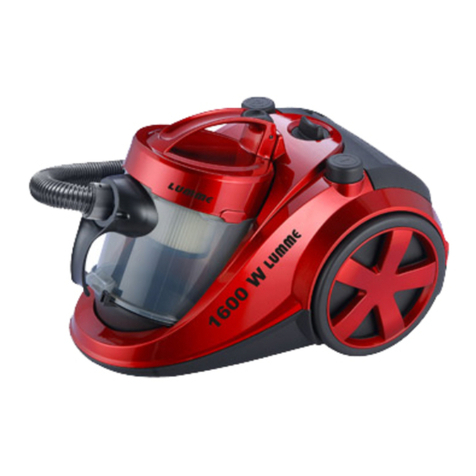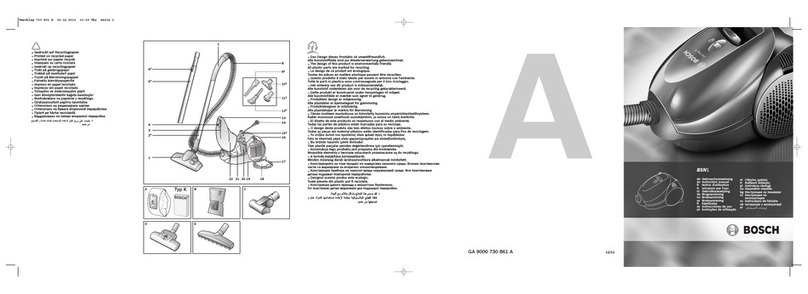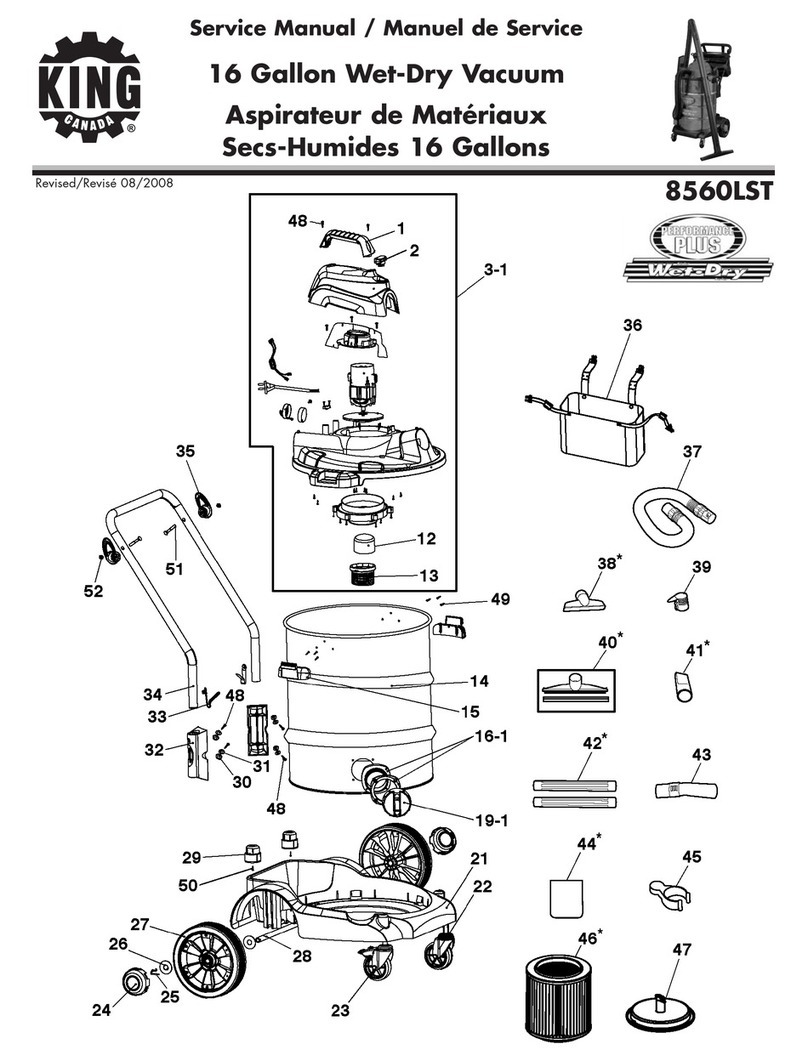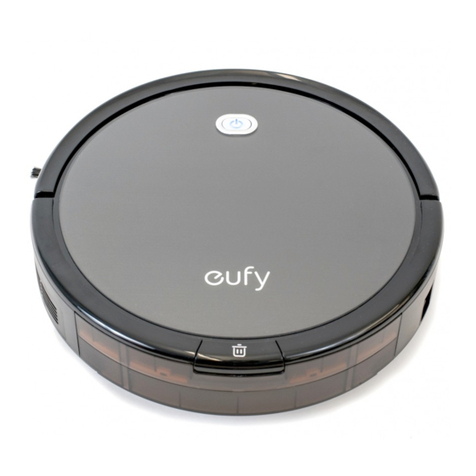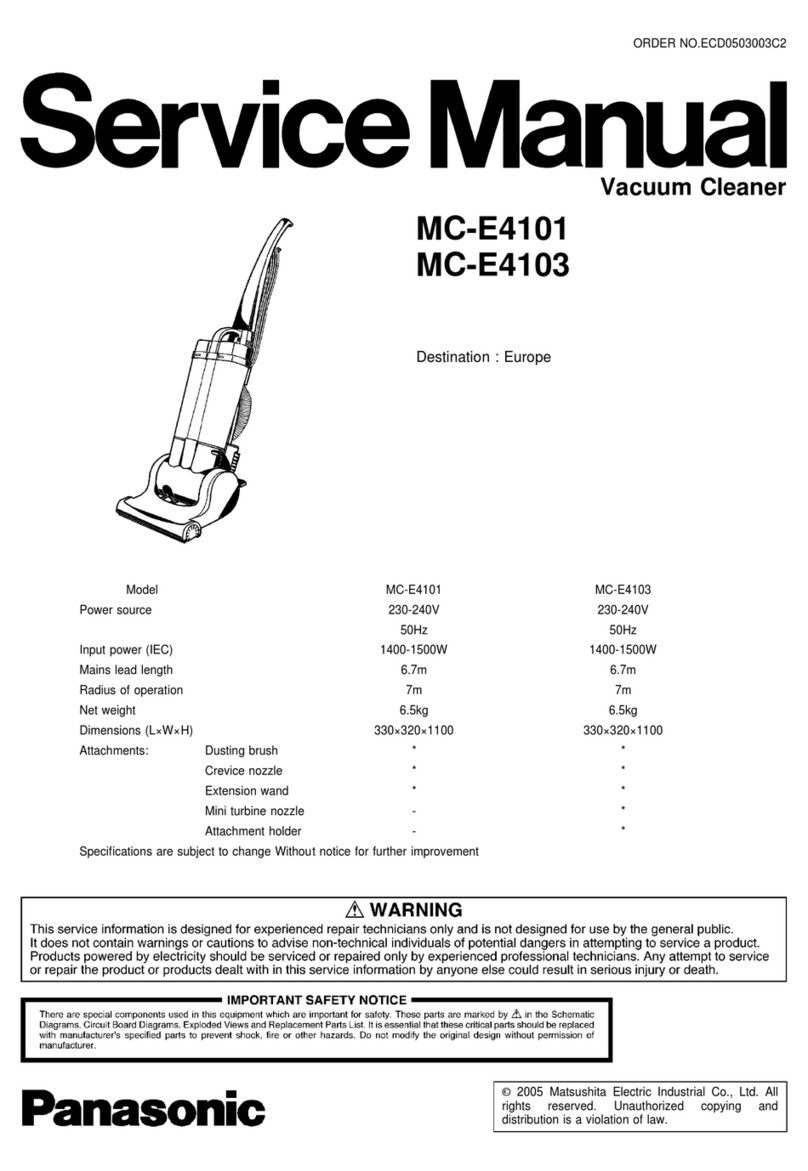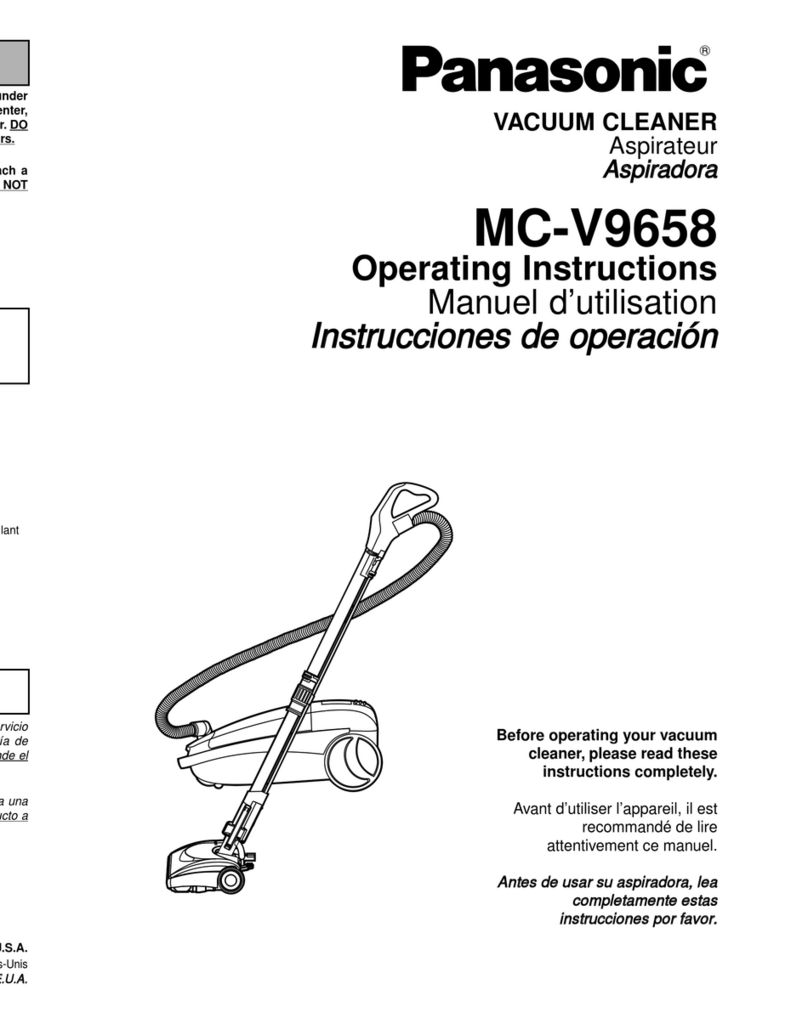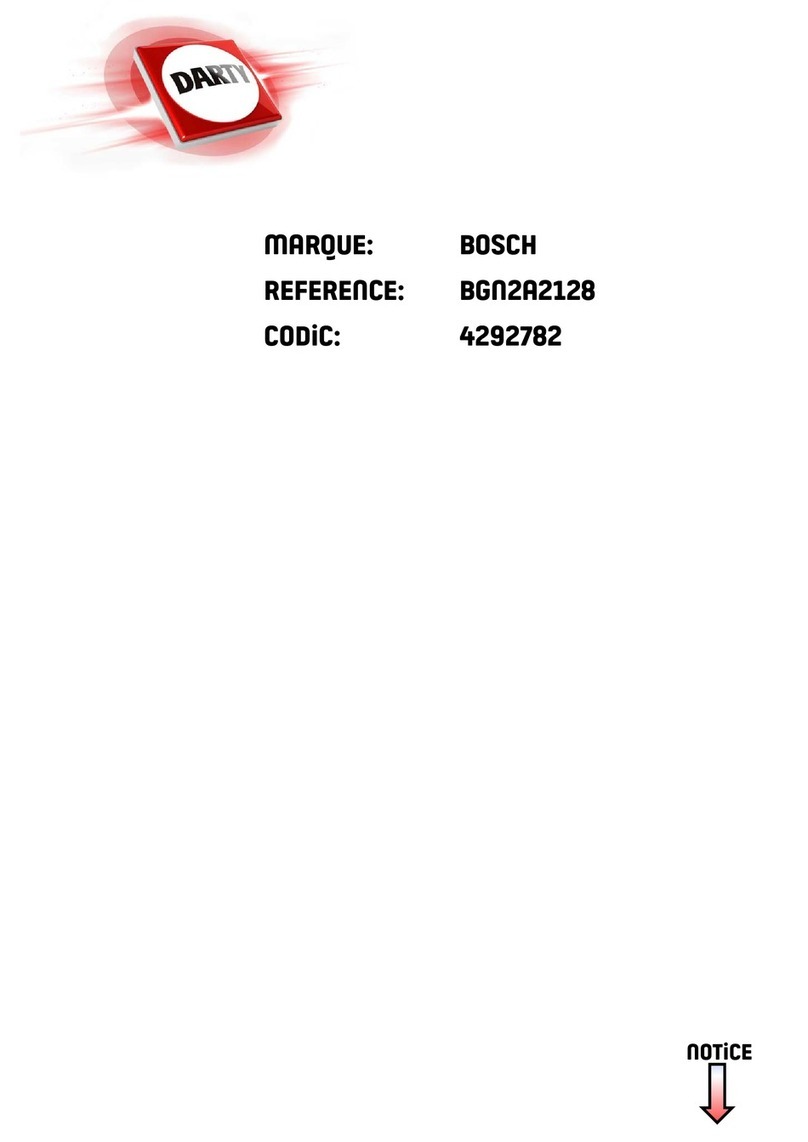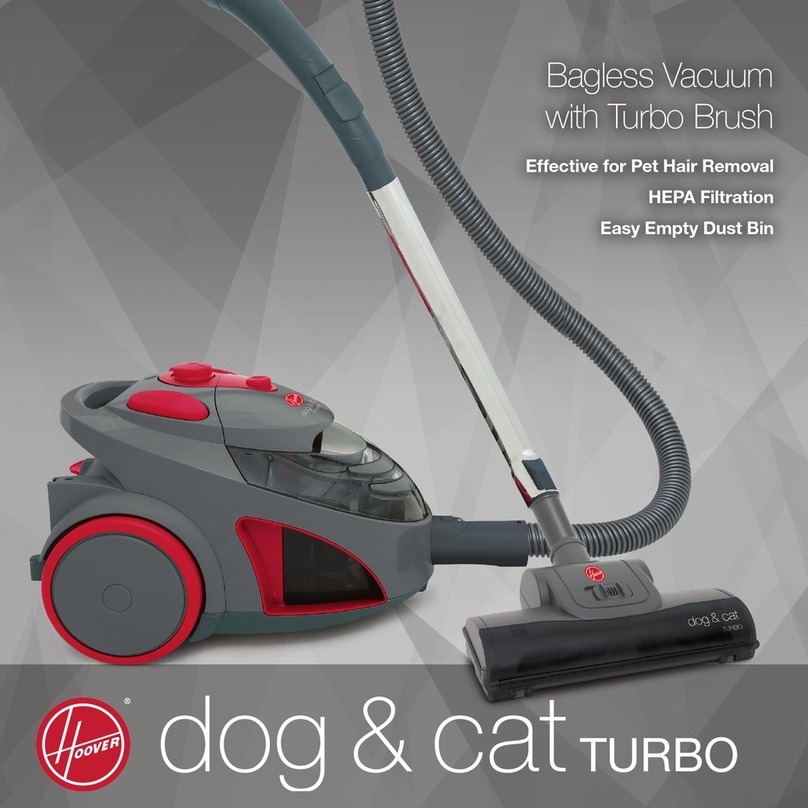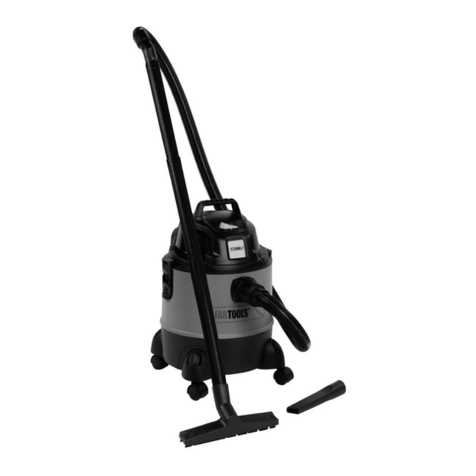Dyson DC21 Motorhead User manual

Issued 04/07
service manual

motorhead
Root Cyclone technology
Patented Dyson technology.
Shrinks to store away
Hose and wand compress and wrap for easy storage.
Flexible steering
Cleaner head steers easily around obstacles.
Clean exhaust air
Air expelled has up to 150 times less bacteria and mould than the
air you breathe.
No running costs
Lifetime washable filter and no bags to buy.
5 year guarantee
Parts and labour guaranteed by Dyson for 5 years.
On-board tool storage
Tools store securely on the machine so they’re always on hand.
Lifetime HEPA filtration
Approved for allergy sufferers by the British Allergy Foundation.
Durable tough construction
Made from ABS and polycarbonate.
Clear bin
Made of tough polycarbonate, the clear bin lets you see when it’s ready to empty.
Foot operated brush control
Operate brush control without bending down.
TM
TM
TM
Motorised brushbar
Powerful bristles remove dirt and pet
hair from carpets. Motorised
brushbar has no belt to replace.
Flexible steering
Cleaner head steers easily
around obstacles.
Shrinks to store away
Hose and wand compress and
wrap for easy storage.
All models carry the
British Allergy Foundation
Seal of Approval.

Introduction
Electrical safety testing
Electrical fault diagnostic
Wiring schematic
Technical
General notes
Main body - dismantle
Main body - assemble
Sub-assemblies - power wand/hose assembly
Sub-assemblies - power floor tool assembly - dismantle
Sub-assemblies - power floor tool assembly - assemble
Pre-filter cover & UMC assy
Motor assy
LMC assy
Cyclone and bin assy
Power floor tool assy
Power wand/hose assy
Fitting notes
Parts recognition
PAGE
42
436
1
5
28
28
27
27
5
2
1
29
11
Electrical overview
3
4
15
17
service manual
23
30

1
service manual
The following tests must be performed prior to and upon completion of all repairs to Dyson floorcare products and
before any functional checks. You must ensure that a full visual inspection of the product is completed prior
to repair. This is vital to avoid any possibilities of personal injury to the end user.
Ensure that at all times during the repair
and testing of products that customers, pets,
children and you are not exposed to any Live electrical supply.
Insulation test
Electrical safety testing
ON
The Seaward Primetest 200 (or equivalent) should be used to test the electrical insulation of a Class ll appliance; it
indicates any electrical leakage.
Insulation test points:
Technical
Introduction
This manual is written specifically for dyson trained engineers and covers the DC21 range.
The service instructions assume that the engineer has the approved tools and test equipment with them.
Introduction
Test through the UMC grille onto
the motor.
Test the 3 sections of the aluminium tube.
Test the 2 screws in the wand cuff cover.
Test the 2 screws in the stow neck cover.
Test the front screw in the brushbar motor
cover lower.
3
2
1

Technical
Plugging the powercord into a suitable electrical outlet and pressing the on/off actuator will always turn on
the vacuum and brushbar motor simultaneously. Pressing the brushbar actuator will turn the brushbar motor
off. Pressing the brushbar actuator whilst the brushbar motor is off will turn the brushbar motor on again.
Note: for safety purposes, if the product is unplugged from the electrical outlet without turning the product
off at the on/off actuator first, the brushbar will fail to turn upon plugging the product back into the
electrical outlet. To activate the brushbar it will be necessary to switch the product off and then on again at
the actuator.
The vacuum motor is fitted with a heat sensitive Thermal Cut-out (TCO). This will shut the motor down to up
to 60 minutes if it reaches a temperature >96 degrees. Excessive temperatures within the motor are usually
caused by machine/filter blockages.
The brushbar motor is protected by a current overload switch that turns off power to the brushbar motor if
the brushbar is obstructed (usually caused by a blockage around the brushbar or within the brush housing).
The obstruction must be cleared and the motor reset by pressing the brushbar actuator. If the cause of the
obstruction is not cleared the overload switch will continually activate.
For added protection the underside of the power floor tool assembly neck contains a stow microswitch that
is activated when the floor tool is stowed (stored) on the rear of the product. When activated the brushbar
motor will not operate.
2
service manual
Electrical overview
A reading of > 2MΩ is accepted.
2MΩis the minimal legal requirement. A reading of below 2MΩ is not considered safe and further investigation
and rectification must be made before the product is used. The following components must be visually inspected:
• Cable rewind assembly, both internal and external
• Switches
• PCB assembly
• Motors
• Carbon build up in the motor housings
If you cannot repair a product with an insulation test reading of below 2MΩ you must
inform the customer that it is unsafe to use. Please inform the customer of the required
actions to repair the product (including the charge structure). If the product is left
un-repaired please indicate on your paperwork/hand held device that the product is
electrically unsafe!

Technical
6. Carry out a resistance test across the brushbar microswitch (points 34-35). A reading of 470K Ω should
be obtained.
7. Carry out a resistance test across the Neutral wire within the power floor tool (points 29-37). A reading
of <1Ω should be expected.
8. Carry out a resistance test across the Live wire within the power floor tool (points 30-36). A reading
of <1Ω should be expected.
9. Carry out a visual inspection of the brushbar motor (commutator, brushes, windings etc.).
10. Carry out a resistance test across the brushes on the brushbar motor. A reading of approx. 7Ωshould
be expected.
If no faults are found replace the PCB assembly.
Unable to turn the brushbar motor on or off using the brushbar switch
1. Check for a loose connection onto the brushbar microswitch (points 34 & 35).
2. Check the mechanical actuation of the brushbar actuator and the brushbar microswitch.
If no faults are found replace the PCB assembly.
Brushbar motor operating whilst power floor tool is in stowed position
1. Check for a loose connection onto the stow microswitch (points 32 & 33).
2. Check the mechanical actuation of the stow microswitch cam and stow microswitch.
3. Carry out a resistance test from the PCB assembly to the end of the power wand/hose assembly
(points 11-27, 12-28 & 13-26). A reading of <1Ωshould be expected in all instances.
If no faults are found replace the PCB assembly.
Note: check ‘points’ refer to the wiring schematic on page 4.
No power to either motor
1. Check for damage/electrical failure to the plug and powercord.
2. Carry out a resistance test across the fuse. A reading of <1Ωshould be expected.
3. Check the mechanical actuation of the on/off switch.
4. Check for a loose connection at points 1-6.
5. Carry out a resistance test on the cable rewind assembly (Live pin on the plug to point 1, and neutral pin
on the plug to point 2) and across the on/off switch (points 4-6). A reading of <1Ωshould be expected.
If no faults are found replace the PCB assembly.
No power to the vacuum motor (brushbar motor operates)
1. Check for a loose connection at points 7-10.
2. Carry out a resistance test between points 7-9 and 8-10 (the wires from the PCB assembly to the vacuum
motor). A reading of <1Ωshould be expected.
3. Carry out a visual inspection of the vacuum motor (commutator, brushes, windings etc.).
4. Carry out a resistance test across the vacuum motor. A reading of approx. 4Ωshould be expected.
If no faults are found replace the PCB assembly.
No power to the brushbar motor (vacuum motor operates)
1. Check for a loose connection between points 11-37.
2. Carry out a resistance test of the Live wire from the PCB assembly to the end of the power wand/hose
assembly (11-27).
3. Carry out a resistance test of the Switch wire from the PCB assembly to the end of the power wand/hose
assembly (12-28).
4. Carry out a resistance test of the Neutral wire from the PCB assembly to the end of the power wand/hose
assembly (13-26).
5. Check the mechanical actuation of the stow microswitch and cam and the brushbar microswitch.
Electrical fault diagnostic
3
service manual

4
service manual
Wiring schematic
Technical
Cable reel
Vacmotor
To the wand
To the main body
Socket
BB
To the
cleaner head
Cleaner Head
Power Wand Hose Assembly
1MΩ
BB
Foot switch
Stow switch
470KΩ
M/C
J4 5
J5
PCB
4
3
2
1
J2
J3
J1
ON / OFF
L
NN
L
L L
L
L
S
N
L
L
L
L
L
S
S
SS
N
N
N
N
14
11
12
13
18
15
16
17 20 23
24
25
21
22
26
27
28
19
3
7
8
910
6
5
4
1
2
29
30
31
32 33
34 35
36
37

Fitting notes
5
service manual
2
3
Press the release catch to remove the
cyclone and bin assembly from the product.
1Unclip the wand assembly from the side of
the cyclone assembly and unwrap the hose
assembly from around the product. Press the
release catch to remove the end of the hose
from the inlet on the side of the product.
Unclip the retaining bracket and remove
from the front of the machine.
If necessary the bin can be removed from the
cyclone assembly by pressing the bin release
catch.
All screws used in DC21
are M3.5 x 16 Torx T-15
unless otherwise stated.
Some female terminal clips
used in DC21contain a lock
mechanism. The mechanism
will need to be pressed
before separation from the
male terminal can occur.
Main body - dismantle
Please ensure that safety goggles are worn at all times whilst servicing Dyson vacuums.
Before attempting any repairs it is vital to
ensure the product is totally isolated from the
mains supply and that accidental reconnection cannot occur.
General notes
Where this symbol is shown, ensure ESD protection is used.

Fitting notes
6
service manual
Unclip the post filter cover catch using a flat
bladed screwdriver. Carefully remove the
cover and filter.
Unclip the pre-filter cover from the locating
point on the upper motor cover (UMC). Pull
the pre-filter cover away from the machine
until it releases from the hinge points.
Remove the pre-filter assembly.
Remove the six screws from the UMC. Pull the cable out slightly and lift the UMC off the Lower Motor
Cover (LMC) assembly.
4
7
6
5
Firmly pull the wheel assemblies off the sides
of the product.

Press the lower retaining clip from inside the
UMC to remove the cable collar.
Separate the collar from the powercord.
Should any parts of the bleed valve need
replacing, carefully push out from the
outside of the UMC using a thin, flat
bladed screwdriver.
To replace the bleed valve, assemble in the
above order.
To remove either actuator or spring, unclip
from the inside of the UMC with the aid of a
pair of long nosed pliers.
To refit, locate the springs, then actuators
from the outside of the UMC, and firmly
snap in.
Fitting notes
8
9
10
11
7
service manual

Release the cable rewind from the lower motor
cover (LMC) assembly. Unclip the fly leads
from around the side of the motor bucket.
Slide the PCB assembly carefully out of the
LMC assembly. Carefully unclip all connectors
from the PCB assembly.
Firmly release the four retaining clips on the
side of the motor bucket. Lift off the motor
bucket top.
Peel the fan case seal off the base of the motor.
Lift the motor, motor plate and mount out of
the motor bucket. Unclip the wiring harness
from the motor. Release the wiring harness
from the motor bucket if necessary.
The motor bucket mount can be replaced if
necessary as shown. When fitting ensure the
mount is correctly located within the channel
on the motor bucket.
Fitting notes
12
15
16
17
18
Release the motor bucket from the LMC
assembly.
14
13
8
service manual

1
3
2
Release the switch holder from the LMC
assembly.
Fitting notes
19
Then prise a thin, flat bladed screwdriver under
the cyclone inlet and slide the inlet off the LMC
assembly.
To refit, slide onto the LMC assembly, refit the
screw and neatly dress the loom within the ribs.
Release the switch from the switch holder.
Unclip the wires to detach the switch from the
PCB assembly.
20
Should the cyclone inlet assembly need
replacing, undo the screw and release the
cyclone inlet loom from the retaining clips within
the inside of the LMC assembly.
21 To remove the bumper strip, unclip the retainers
and forcefully push the bumper strip away from
the LMC.
To replace, snap clips back in sequence shown.
23
22
9
service manual

Prise the castor wheel and axle out of the
castor body using a thin, flat bladed
screwdriver. To refit, clip into the castor body.
Prise the castor body away from LMC using a
large flat bladed screwdriver. To refit, push
firmly onto the castor spigot.
Fitting notes
24
25
10
service manual

Fit the motor mount onto the motor plate.
Locate the motor plate onto the motor.
Refit the wiring harness into the motor bucket if
previously removed. Ensure the grommet is
adequately sealed.
Fit the fancase seal onto the base of the motor.
Align the motor bucket top with the motor
bucket so the arrow points towards the wiring
harness grommet. Firmly clip the motor
bucket top onto the four catches around the
side of the motor bucket. Ensure the detail
on the fancase seal protrudes fully through
the hole in the motor bucket top.
Attach the wiring harness to the motor. Lower
the motor into the motor bucket.
Fitting notes
26
27
30
31
28
Ensure the detail on the motor mount locates
into the end of the motor bucket.
29
Main body assemble
11
service manual

Carefully attach the wires from the cable
rewind assembly and cyclone inlet assembly
onto the PCB assembly.
Locate the black wires from the PCB assembly
through the switch holder and attach to the
switch. Clip the switch into the holder.
Locate the cable rewind assembly into the
LMC assembly. Ensure it sits within the LMC
as shown. When fitted correctly the brake
actuator will point directly upwards.
Fitting notes
33
35
32
Position the switch holder into the LMC
assembly. When positioned correctly the switch
button will point directly upwards.
34
Lower the motor bucket into the LMC assembly.
The lugs on the motor bucket mount locate
into the ribs within the LMC assembly. Locate
the cable rewind wires within the retaining clips
around the side of the motor bucket.
36
12
service manual

Locate the plug through the UMC. Position
the LMC vertically. Locate the UMC onto it
ensuring that the UMC grille is seated centrally
around the fancase seal. Refit the 6 screws.
Open the cable collar and fit over the
powercord. Locate the collar into the LMC.
Firmly clipinto place.
Fitting notes
39
40
Carefully attach the wiring harness to the PCB
assembly. Locate the PCB assembly into the
channels in the LMC assembly.
37
Neatly dress all wires within the channel
provided. Hook the wiring harness around
the last retaining clip on the side of the motor
bucket.
Note: locating the cable rewind wires in the
channel last, retains the other wires within the
channel.
Important: ensure all wires are clear of the
side wall. Failure to ensure this could result
in trapped wires when fitting the UMC.
38
Side wall
Channel
Retaining
clip
13
service manual
UMCgrille

Carefully place the post-filter cover into the
2 locating points at the front of the machine
and then firmly clip the rear onto the LMC
assembly.
Refit the pre-filter assembly into the top of the
UMC. Clip the pre-filter cover into the hinge
points on the rear of the UMC. Clip the
pre-filter cover catch over the retainer on the
front of the UMC.
Refit the HEPA filter assembly into the front of
the product.
Clip the end of the hose assembly into the
cyclone inlet. Clip the hose retainer onto the
front of the product. Clip the cyclone and bin
assembly onto the machine. Wrap the hose
around the product and clip the wand into the
side of the cyclone assembly.
Locate the power floor tool into the stow on
the rear of the product.
Fitting notes
43
45
42
44
Firmly press the wheels onto the side of the
product.
41
14
service manual

service manual
To remove the wand handle from the power
wand hose assembly, undo the 2 screws on
the top of the wand.
46
Undo the 2 Torx T-8 screws on the rear of the
wand handle.
47
Slide the wand handle out the rear of the
power wand hose assembly.
Fit in reverse.
48
The wand handle cover can be replaced by
removing the Torx T-8 screw in the rear of the
cover.
49
Carefully prise out from the rear using a thin,
flat bladed screwdriver.
Fit in reverse.
50
Fitting notes
To replace the front wand catch or spring,
prise the catch away from the retainers on the
wand using a thin, flat bladed screwdriver.
51
16
15
Sub-assemblies - power wand/hose assembly

service manual
service manual
Fitting notes
To refit, locate the spring onto the cruciform
on the underside of the catch, then lower
the catch onto the wand ensuring the spring
locates into the circular detail on the wand.
Firmly press the locating holes on the catch
over the retainers on the wand.
52
The wand cuff cover can be replaced if
necessary by undoing the 2 screws shown
and lifting off the cover.
53
Before fitting a new cover, ensure all wires
are located within the channels and retainers
provided.
54
To fit, locate the detail on the rear of the
cover under the lip on the wand. Lower the
cover onto the wand. Refit the 2 screws.
55
16
15

service manual
Fitting notes
17
V4NST7C2Y1-UL
5A125/250VAC.
Locate the pillar on the cam into the hole in
the side of the neck. Locate the ring on the
end of the spring over the thin pillar in the
neck ensuring the tail of the spring remains
retained within the cam channel. Twist the
cam into position.
Test the actuation of the cam against the
microswitch.
Fit the stow neck cover and 2 short screws.
61
When fitting the spring, ensure the tail of
the spring locates into the channel in the
microswitch cam.
60
Carefully prise the microswitch cam and
spring out of the neck.
59
The stow wheel or axle can be replaced
by prising out of the stow using a thin, flat
bladed screwdriver.
To fit, push both parts firmly into the stow.
56
To replace the stow neck cover, stow
microswitch cam or spring remove the 2 short
screws in the cover.
57
Firmly pull from the rear of the cover off the
side of the neck.
58
Sub-assemblies - Power floor tool assembly - dismantle
Other manuals for DC21 Motorhead
6
Table of contents
Other Dyson Vacuum Cleaner manuals

Dyson
Dyson DC 36 User manual
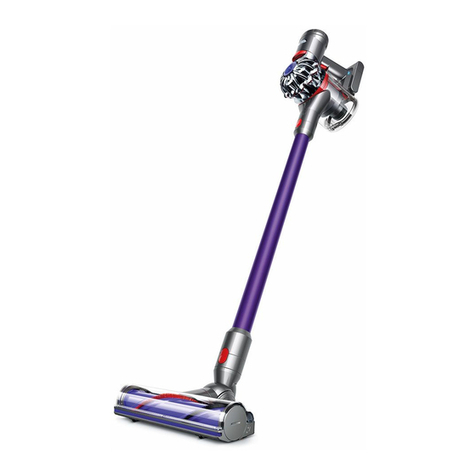
Dyson
Dyson V7 ANIMAL User manual
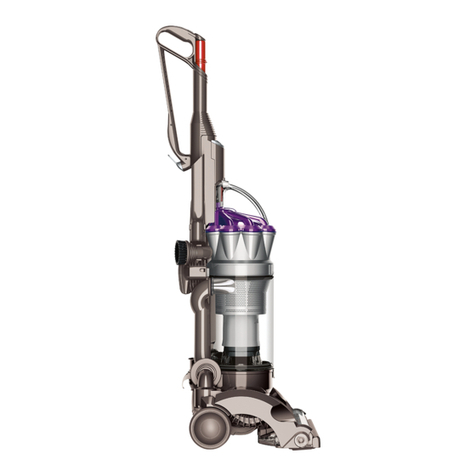
Dyson
Dyson DC17 Asthma and Allergy User manual

Dyson
Dyson DC 65 User manual
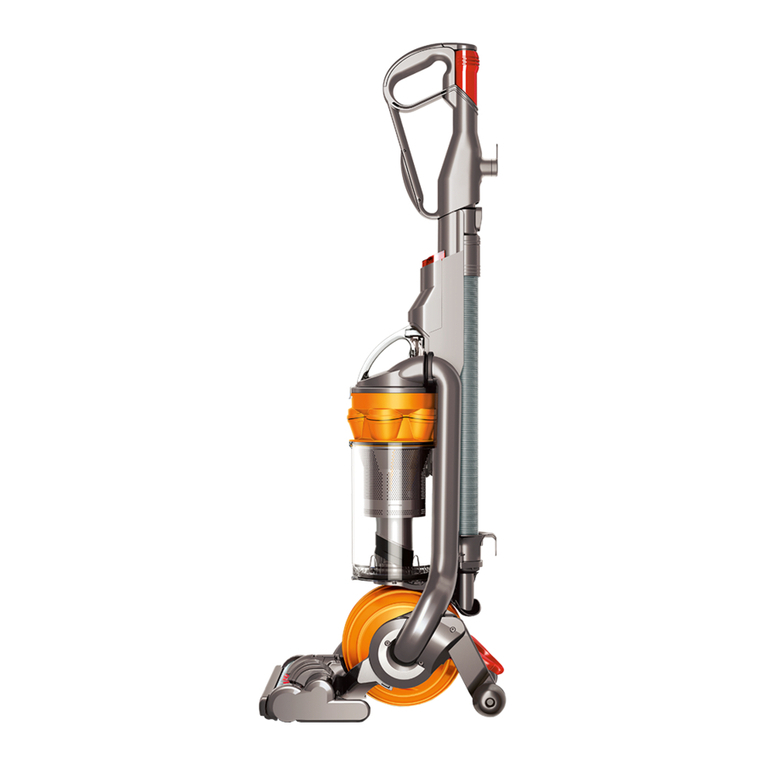
Dyson
Dyson Ball DC25 User manual

Dyson
Dyson DC 58 User manual

Dyson
Dyson Dc45 User manual
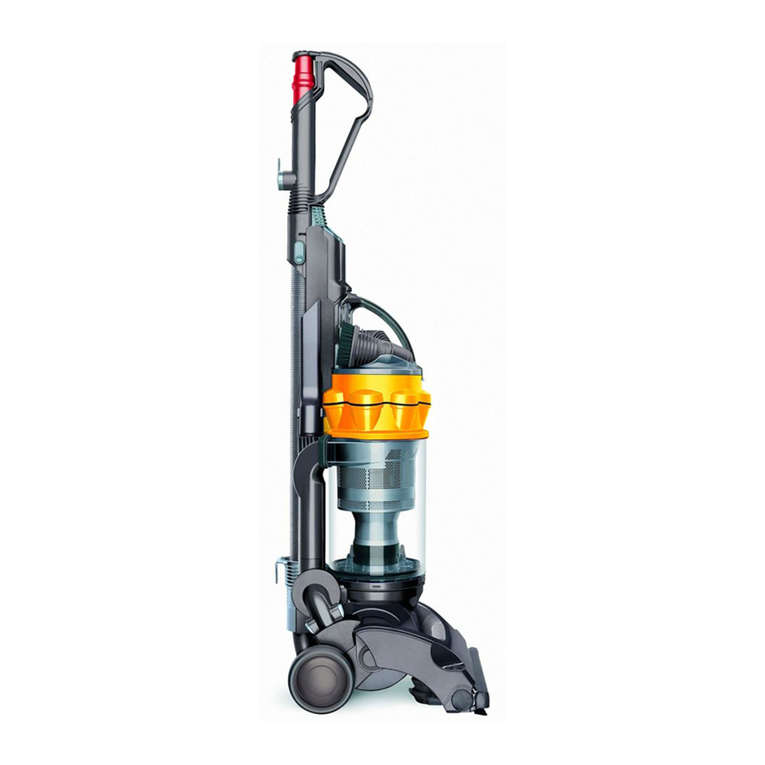
Dyson
Dyson DC14 Complete User manual
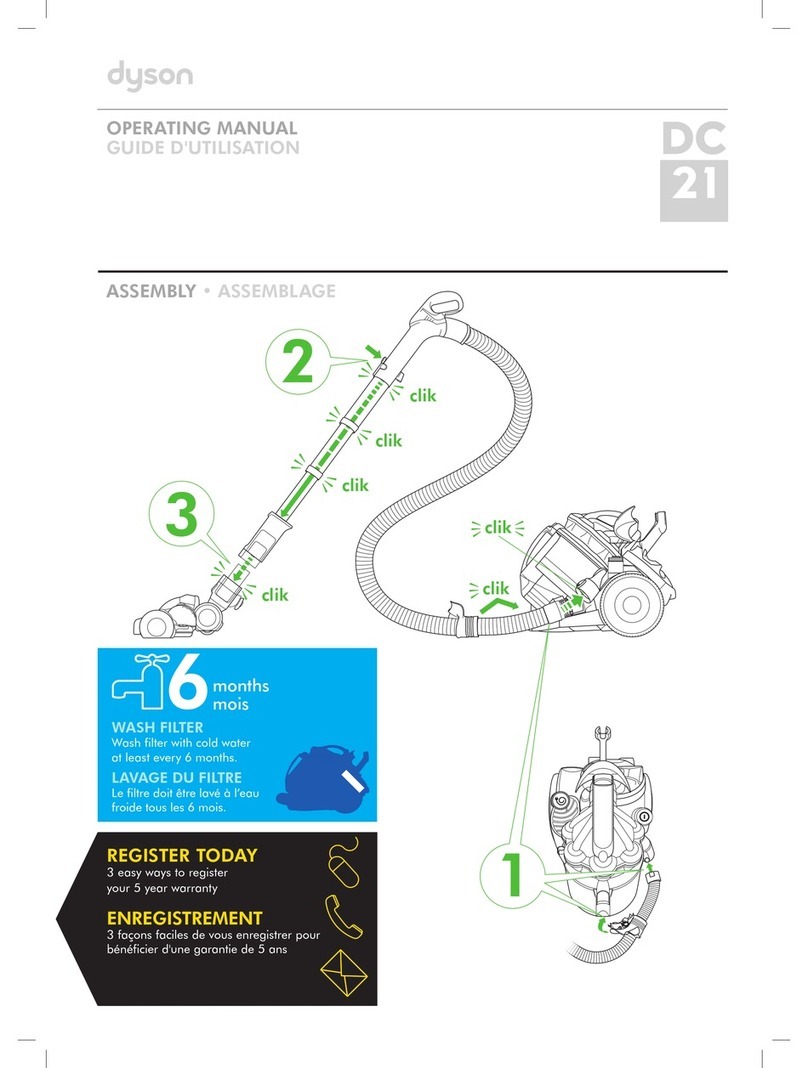
Dyson
Dyson DC21 Motorhead User manual
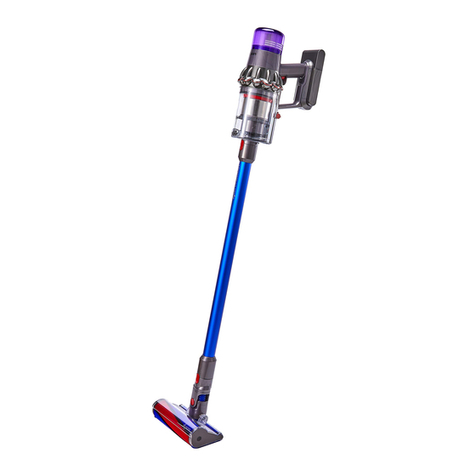
Dyson
Dyson SV15 User manual
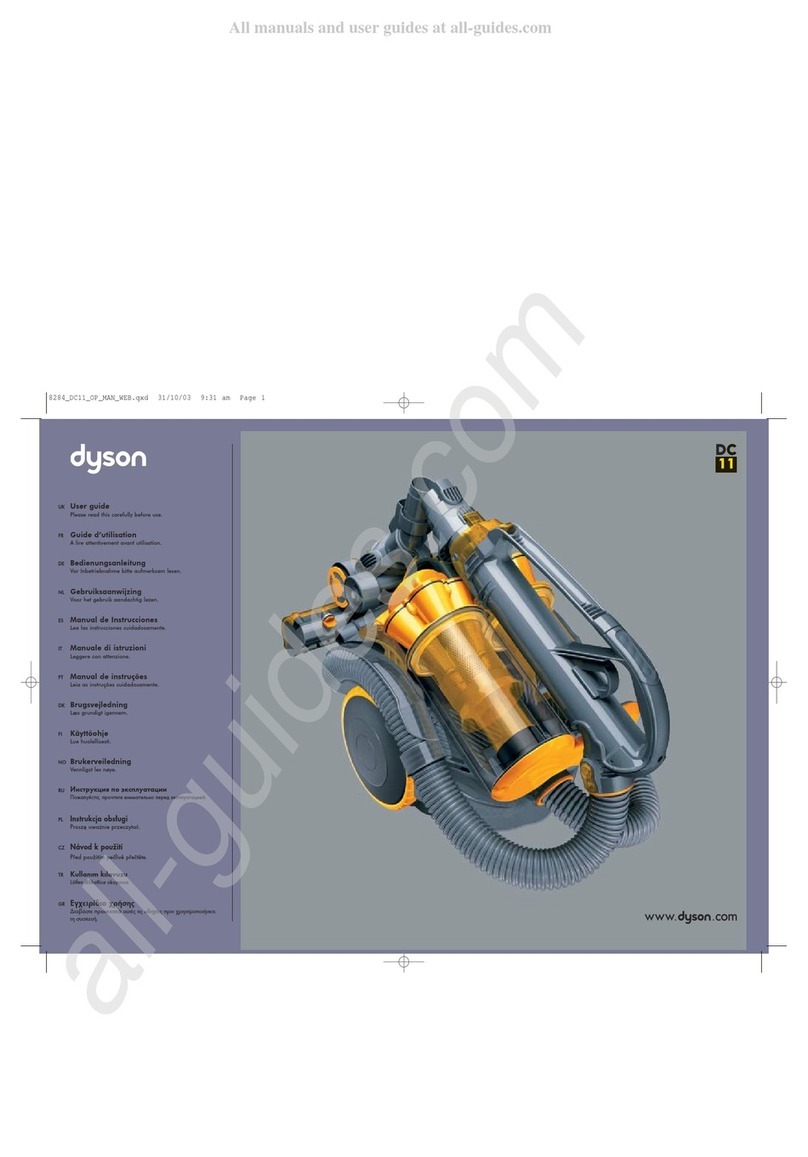
Dyson
Dyson DC 11 User manual

Dyson
Dyson Ball User manual

Dyson
Dyson DC19 User manual
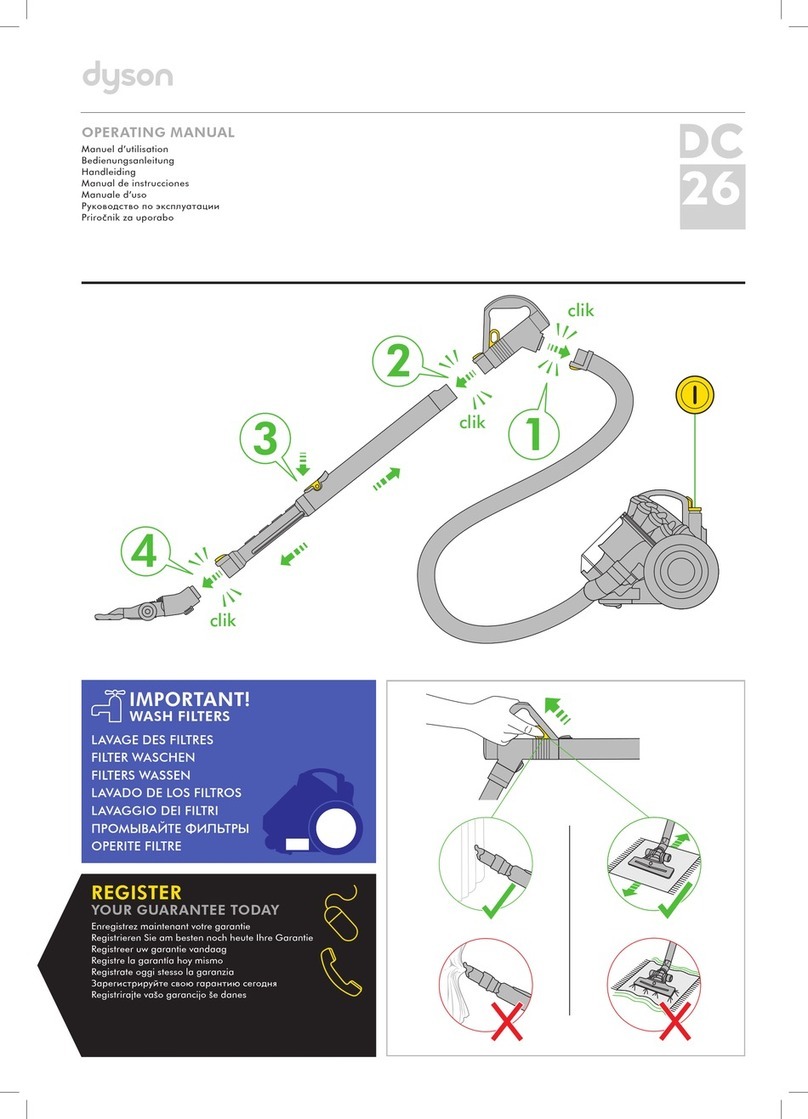
Dyson
Dyson DC26 User manual
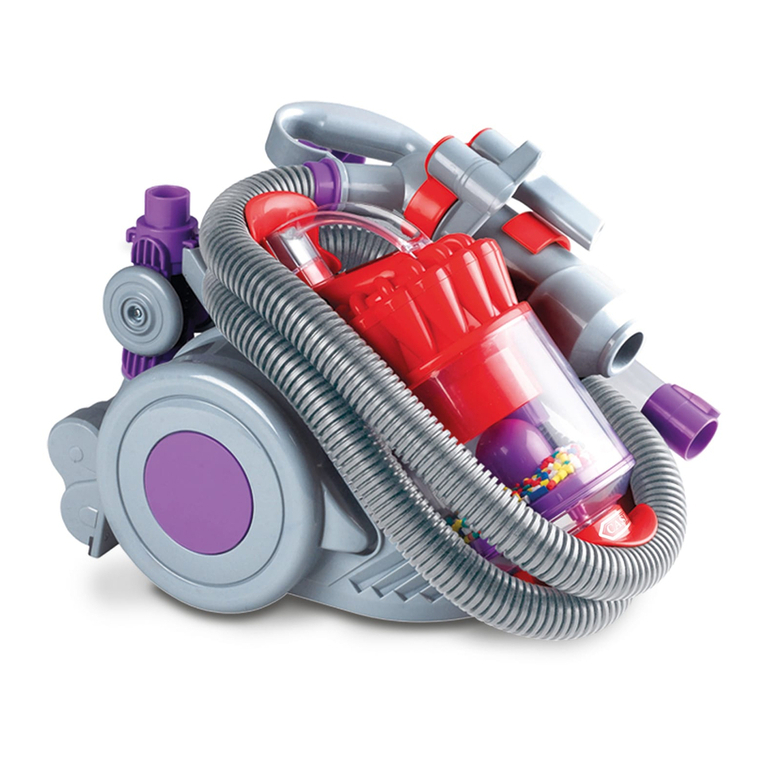
Dyson
Dyson DC22 User manual
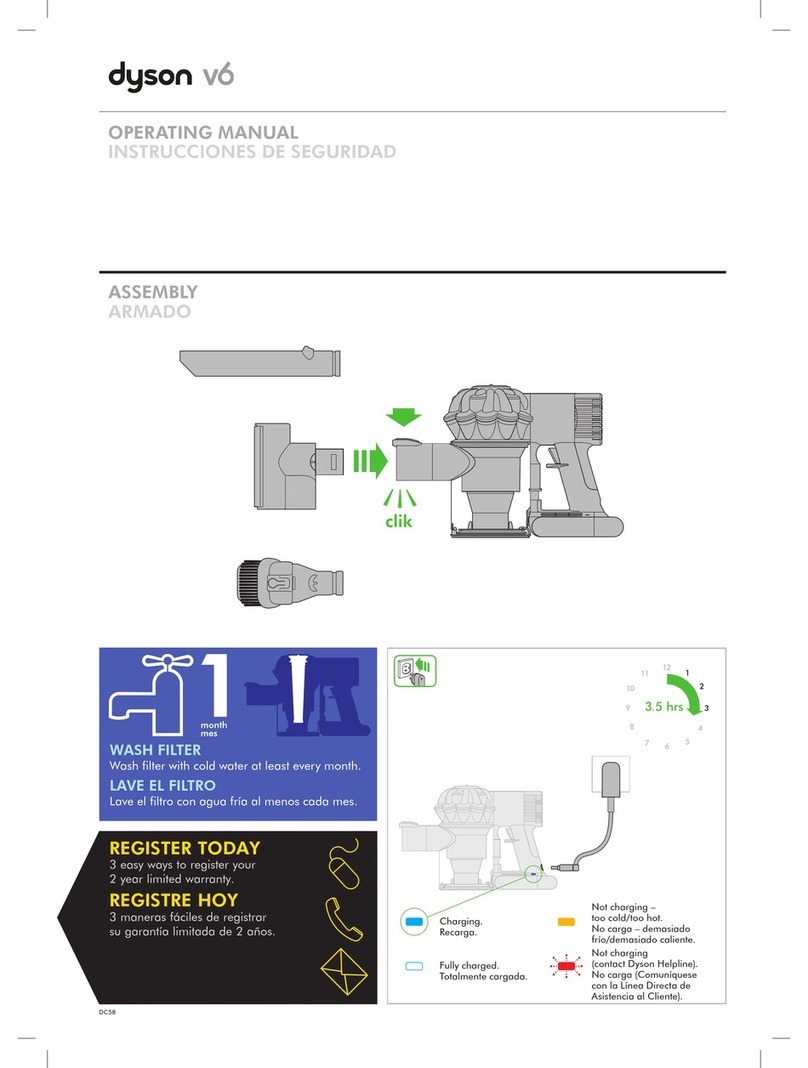
Dyson
Dyson V6 Absolute User manual
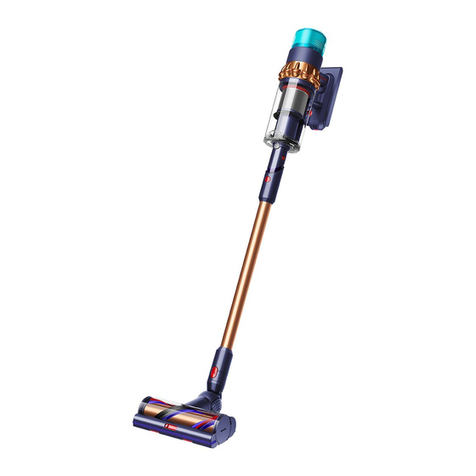
Dyson
Dyson gen5 detect User manual
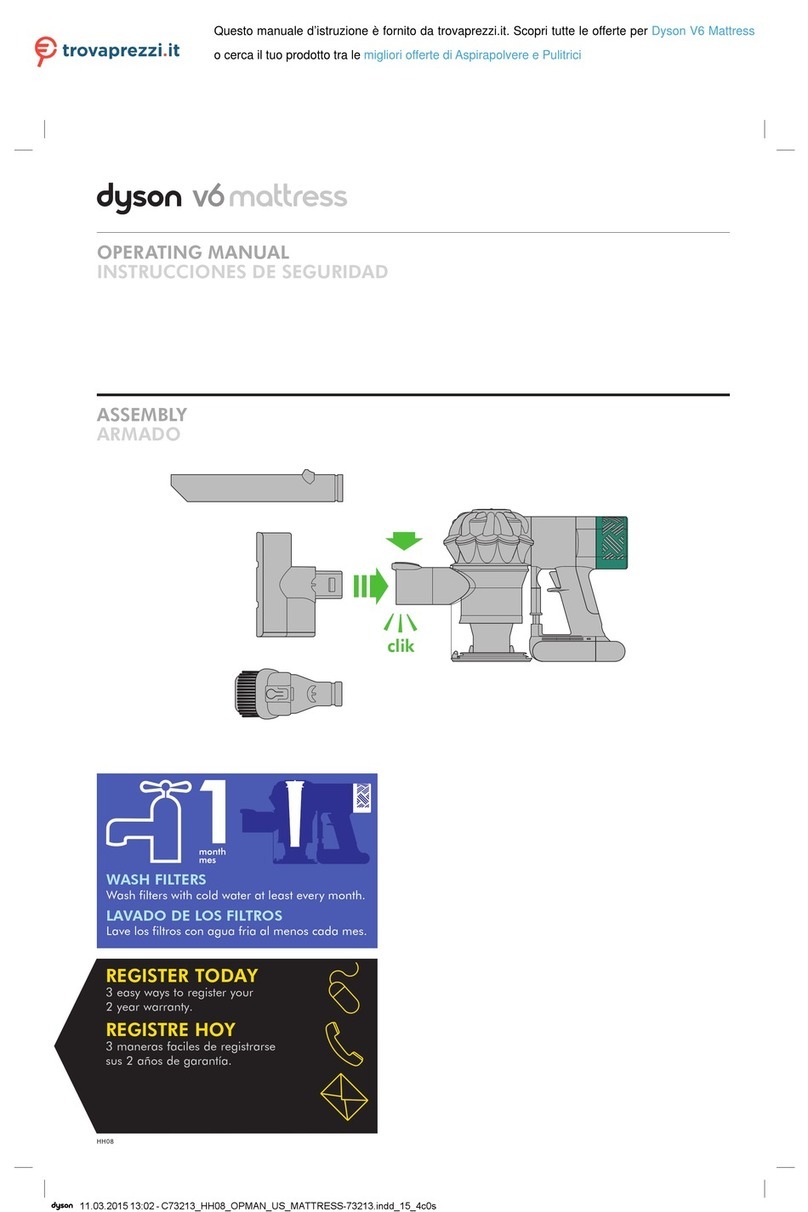
Dyson
Dyson V6 Mattress User manual
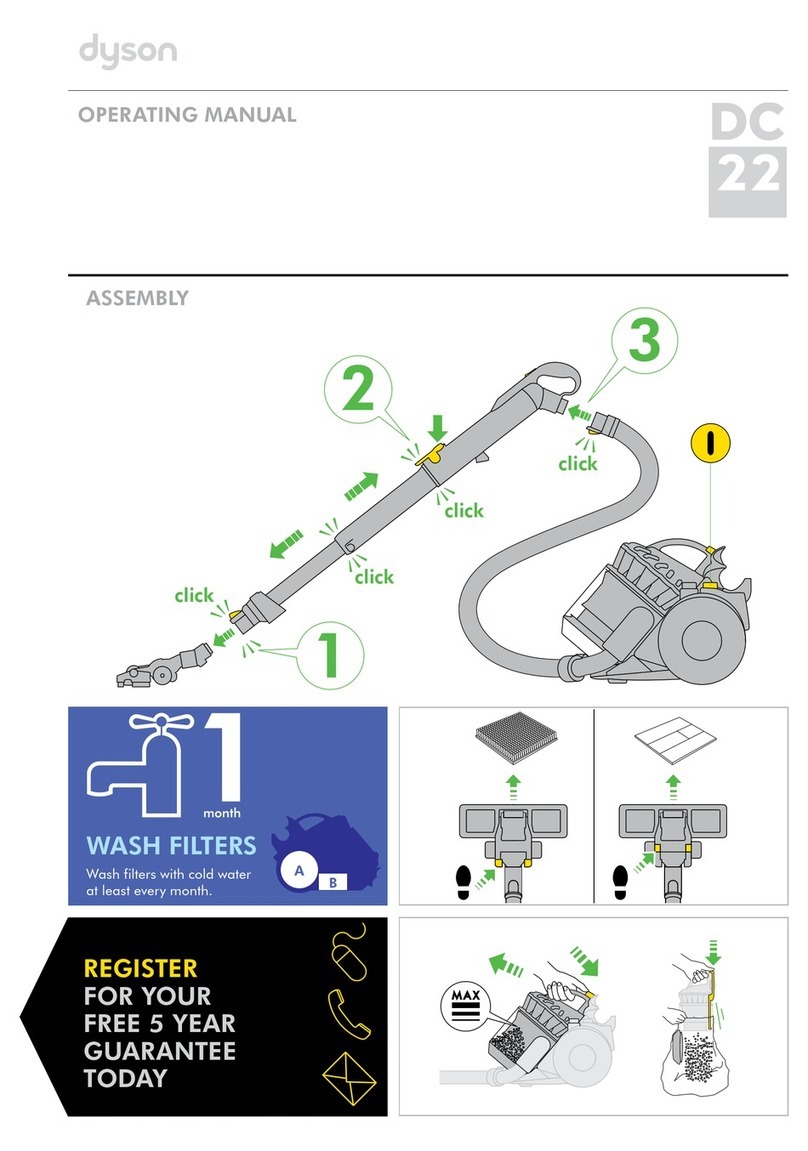
Dyson
Dyson DC22 User manual
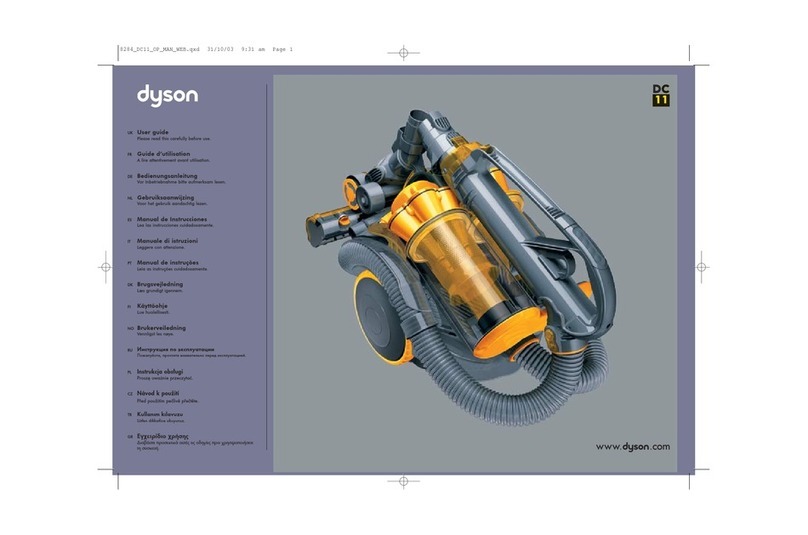
Dyson
Dyson DC11 Telescope User manual


